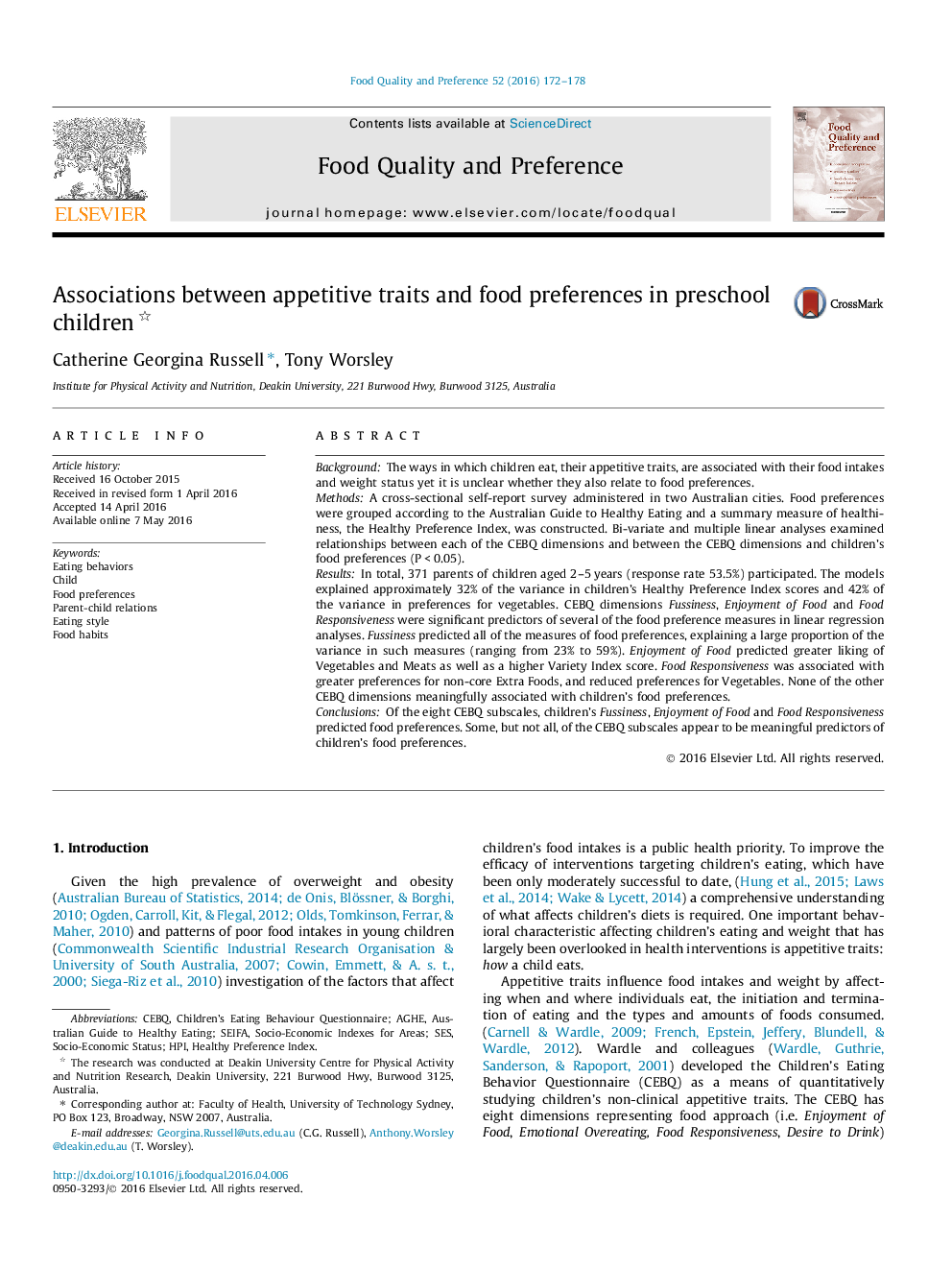| Article ID | Journal | Published Year | Pages | File Type |
|---|---|---|---|---|
| 6261051 | Food Quality and Preference | 2016 | 7 Pages |
â¢Only some appetitive traits predicted children's food preferences.â¢Fussiness predicted all measures of food preferences.â¢Enjoyment of Food predicted liking of vegetables, meats and variety.â¢Food Responsiveness predicted preferences for non-core foods and vegetables.
BackgroundThe ways in which children eat, their appetitive traits, are associated with their food intakes and weight status yet it is unclear whether they also relate to food preferences.MethodsA cross-sectional self-report survey administered in two Australian cities. Food preferences were grouped according to the Australian Guide to Healthy Eating and a summary measure of healthiness, the Healthy Preference Index, was constructed. Bi-variate and multiple linear analyses examined relationships between each of the CEBQ dimensions and between the CEBQ dimensions and children's food preferences (PÂ <Â 0.05).ResultsIn total, 371 parents of children aged 2-5Â years (response rate 53.5%) participated. The models explained approximately 32% of the variance in children's Healthy Preference Index scores and 42% of the variance in preferences for vegetables. CEBQ dimensions Fussiness, Enjoyment of Food and Food Responsiveness were significant predictors of several of the food preference measures in linear regression analyses. Fussiness predicted all of the measures of food preferences, explaining a large proportion of the variance in such measures (ranging from 23% to 59%). Enjoyment of Food predicted greater liking of Vegetables and Meats as well as a higher Variety Index score. Food Responsiveness was associated with greater preferences for non-core Extra Foods, and reduced preferences for Vegetables. None of the other CEBQ dimensions meaningfully associated with children's food preferences.ConclusionsOf the eight CEBQ subscales, children's Fussiness, Enjoyment of Food and Food Responsiveness predicted food preferences. Some, but not all, of the CEBQ subscales appear to be meaningful predictors of children's food preferences.
